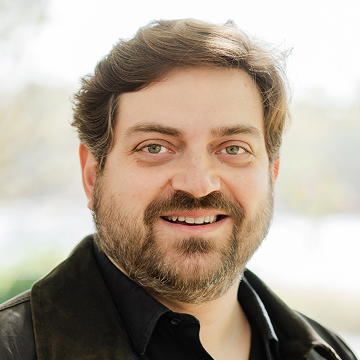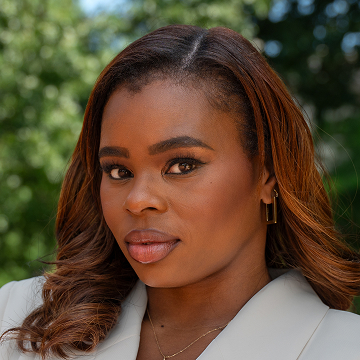CALGARY, Alberta — President Donald Trump wore two pins on his suit on Monday: one a simple American flag and the other an American flag attached to a Canadian one — a harbinger of sorts of a warmer partnership after Trump spent months suggesting Canada would be better off ditching its flag altogether.
“We’ve developed a very good relationship,” the president said during a bilateral meeting to kick off the G7 in the Canadian Rockies. “I think we’re going to accomplish a lot and I expect to.”
Gone were Trump’s calls for Canada to become the 51st state, a demand that upset his relationship with Canada’s former leader.
“Never before in G7 history has a one leader said he wants to annex completely another G7 country, let alone another country that’s hosting the G7 that year,” said John Kirton, the director of the G7 Research Group. “And of course, this year, we’ve got two: Canada and Greenland,” which is part of Denmark and the European Union.
And also missing were the tough words Canadian Prime Minister Mark Carney had for the 47th president, which in part won him his own election in April. In their place was what appeared to be the start of a reset between the two leaders, and signs of progress on a potential new trade deal.
“Nostalgia isn’t a strategy. We have to change with the times and build a better world. And some of you — such as you, Mr. President — have anticipated these massive changes and are taking bold measures to address them,” Carney told Trump in front of reporters Monday.
Trump may have cut his trip to Canada for the G7 short with an unexpected Monday night exit, but he left with at least one mission somewhat accomplished. A White House official told NOTUS that they were happy with how the meeting between Trump and Carney went on Monday, and the prime minister told reporters traveling with the president that the meeting was “fantastic.”
This year’s taunts weren’t the only baggage hanging over Trump’s visit to Canada this week: The meeting was also haunted by recent history, when Trump blew up the, at one point, cordial 2018 G7 meeting in Canada by leaving early and pulling his support for an agreed-upon statement, blaming then-Canadian Prime Minister Justin Trudeau for the collapse.
“We weren’t surprised then,” said Brian Clow, a former senior adviser to Trudeau who was at the time focused on U.S.–Canada relations. “I think nobody is surprised then and now that the president can be unpredictable and chaotic.”
Clow said Trudeau had tried to fix his relationship with Trump. Once it was clear Trump would win the presidency last year, Trudeau travelled to Mar-a-Lago, held multiple phone calls with Trump during his presidential transition and then one in February that Clow described as “pleasant.” But Trump’s comments calling Trudeau a “governor” and saying Canada should be part of the United States, followed by steep tariffs, made a fruitful relationship difficult.
“I don’t think Trudeau would change his approach at all,” Clow said. “In my view, in order to get Trump onside or to be constructive, it would have meant Canada not retaliating on tariffs, and that just wasn’t an option for us.”
Trump’s disdain for Trudeau, who left office in March, was a feature of the conversation on Monday. As Carney looked on, Trump told reporters that it was a “mistake” for Trudeau to kick Russia out of the G8 (though he made no mention that Russia was removed because the country had annexed Crimea).
Clow said Trudeau and Carney spoke about how to deal with Trump during Carney’s transition to office. And it’s clear now that Carney is taking a bit of a different approach. Officials in Canada channelled ahead of time that there would be no communiqué, removing that potential conflict from the table. And they laid out the red carpet for the president despite the county’s frustration with his comments and tariffs.
“Carney does not have a praise-dependent personality from, far from it,” said Kirton. “So I think he’s perfectly willing, as are the other leaders with the experience of the past, to let Trump take credit for all the big wins here in Kananaskis.”
A White House official said they viewed Carney’s visit to the White House in early May as the official reset of the relationship. They added that the pair had stayed in touch since then.
“I think Canada hopes for a reset of the relationship with Carney, but that takes time, because it’s so ingrained in Trump’s mind what happened with Trudeau,” said Josh Lipsky, chair of International Economics at the Atlantic Council. Trump and Trudeau spent much of eight years in an up-and-down relationship, Lipsky said, with collaboration and new trade deals like USMCA, but also lows, particularly in Trudeau’s final months in office. “So it’s not all going to happen in 48 hours at the summit,” he said.
The White House had been quiet about what Trump’s goals were for this week’s summit, or what deliverables would come from it. The president himself was clear that he was planning to achieve various trade deals. On Monday, he formally announced his first as he and UK Prime Minister Keir Starmer touted their strong relationship even though the prime minister has only been in office for under a year.
“The UK is very well protected” from further tariffs, the president said when asked by reporters. “You know why? Because I like him. That’s their ultimate protection.”
Trump, at least so far, hasn’t gone quite that far with Carney and Canada.
“The trade war with Canada is on the back burner,” said Lipsky. And nearly every question the president fielded on Monday focused on other issues — like the Iran–Israel conflict or potential U.S. trade deals with China and the EU. “But for Canada, of course, they’re focused on the U.S., because this is hitting their economy every day, especially steel tariffs and auto tariffs. So you’re in this situation where they’re focused on the U.S., but the U.S. is not as focused on them as they were in February,” Lipsky said.
The president all throughout Monday seemed to be in a good mood. But one former Trump administration foreign policy official, who attended conferences like these, said Trump has always shown up and collaborated with foreign leaders, even when people suggested he wouldn’t.
“The president is a very pragmatic person, he’s going to deal with people who can solve his problems,” said one former Trump administration foreign policy official. “It’s not like some miracle’s being worked here.”
Now instead of entering his second and final day in Kananaskis, the president will wake up in D.C. — having signed a tweaked statement calling for a deescalation in the conflict between Israel and Iran, hours after officials indicated that he wouldn’t. The president is making clear that he plans to deal with both foreign and domestic policy in his own way.
“There was kind of this perception, and it was still fairly early in the administration that, well, we will just explain what the international global order means, and then the president will agree with us,” the former official said. “And I think after seven or eight, nine years, people recognize it’s not going to happen.”
—
Jasmine Wright is a reporter at NOTUS. Violet Jira contributed reporting to this story.
Sign in
Log into your free account with your email. Don’t have one?
Check your email for a one-time code.
We sent a 4-digit code to . Enter the pin to confirm your account.
New code will be available in 1:00
Let’s try this again.
We encountered an error with the passcode sent to . Please reenter your email.


